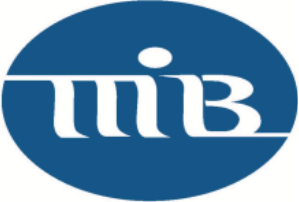By Steven Johnson, CPA, Shareholder A Z, Helena, MT
In response to the novel coronavirus, 2020 has been a momentous year for federal tax legislation that created programs and provisions to help small businesses weather the global pandemic storm. The response has been extensively reported on. Most lenders are familiar with the most popular programs, such as the Paycheck Protection Program (PPP) and Economic Injury Disaster Loan (EIDL) programs. While these programs are the most widely understood, the Coronavirus Aid, Relief and Economic Security (CARES) Act contains several items to accelerate tax benefits for individuals and corporations. This article discusses three less known tax-related items from the CARES Act that lenders can look for when reviewing the tax returns of current or potential borrowers. Lenders should refer taxpayers to a qualified tax professional for further assistance.
Net Operating Losses
The Tax Cuts and Jobs (TCJA) Act, passed in December 2017, contained legislation that limited taxpayers’ ability to carry back and deduct net operating loss (NOL). Specifically, NOL carrybacks were eliminated for losses incurred in businesses other than farming and farm businesses were given a two-year carryback instead of their historical five-year carryback. In addition, losses could be carried forward indefinitely, but deductions for NOLs carried forward were limited to 80% of taxable income before the NOL deduction. These provisions delayed and limited tax benefits from losses.
The CARES Act amends the laws that govern the taxpayer’s ability to carry back net operating losses. Under the CARES Act, taxpayers can carry back NOLs generated in 2018, 2019 and 2020 for up to five years, and it applies to all businesses. The Act also allows for simplified filing with Form 1045, Application for Tentative Refund, or Form 1139, Corporation Application for Tentative Refund. These forms can be filed via fax, and taxpayers could see a refund in as little as two weeks. Lenders should review borrowers’ individual or corporate income tax returns for net losses in 2018, 2019 or 2020 to see if they can seek these added benefits. It is expected these provisions will be widely utilized during the 2021 filing season for tax years ending December 2020.
Corporate Alternative Minimum Tax (AMT) Credits
TCJA repealed AMT tax for corporations. Corporations with unused AMT tax credits could claim them over the four years between 2018 and 2021.
The CARES Act now allows corporations to claim the balance of unused AMT tax credits in 2018 and 2019. Lenders should look for Form 8827, Credit for Prior Year Minimum Tax — Corporations, for unused AMT credits. Taxpayers can amend or file Form 1139, Corporation Application for Tentative Refund, to claim unused AMT tax credits.
Bonus Depreciation Available for Qualified Improvement Property
The TCJA inadvertently excluded bonus depreciation for Qualified Improvement Property (QIP) by designating it as 39-year property instead of 15-year property. Since the TJCA, tax preparers have been waiting for a technical correction to allow QIP to be deducted through bonus depreciation. This correction was included in the CARES Act.
In March 2020, the IRS updated Publication 946, How to Depreciate Property, in response to the CARES Act. Generally, QIP includes any improvements to an interior portion of a nonresidential real property building if the improvements were placed in service after the date the building was placed in service. QIP does not include the enlargement of a building, elevators or escalators, or the building’s internal structural framework.
Until late March of the 2020 tax filing season, taxpayers treated QIP placed in service during 2018 and 2019 as 39-year property available for expensing through Section 179. Although Section 179 could allow certain taxpayers to expense 100% of QIP, limitations apply to Section 179 that do not apply to bonus depreciation. Namely, Section 179 is not available for rental activities, is limited to business income, and cannot create a net loss. These limitations could delay the tax benefit of QIP.
The CARES Act retroactively corrects the eligibility of QIP for bonus depreciation to Jan. 1, 2018. QIP placed in service after this date is 15-year property available for bonus depreciation. Lenders should discuss the tax deduction of improvements to nonresidential buildings with borrowers. Lenders should review Form 4562, Depreciation and Amortization, for QIP.
The number of programs and provisions created in 2020 to mitigate the economic impact of COVID-19 can be overwhelming. Changes related to net operating losses, unused AMT credits, and the eligibility of QIP for bonus depreciation are three lesser-known items that could accelerate tax relief for your borrowers.
For more information on these lesser-known programs and benefits, see “Tentative refunds under the CARES Act in 2020” in the July 2020 issue of the Journal of Accountancy or “Tax Practice & Procedures: Liquidity and Cash Management Strategies During a Pandemic” in the July 2020 issue of The Tax Advisor.

Steven Johnson, CPA, Shareholder A Z, Helena, MT
This story appears in Issue 3 2020 of the Community Banker Magazine.









